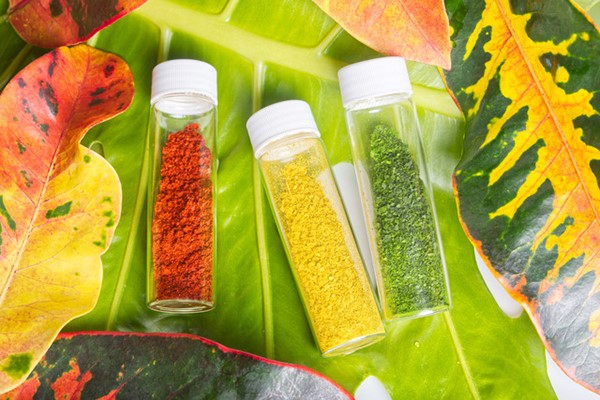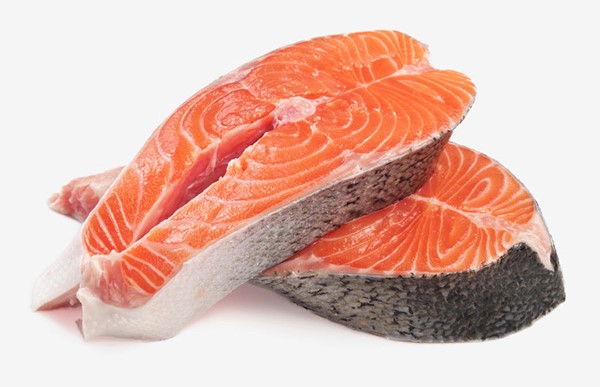Kuehnle AgroSystems aims to make a microalgae-based astaxanthin cost-competitive with the synthetic sources that dominate the market

Kuehnle Agrosystems is the first and only company to achieve a patented, scalable industrial manufacturing platform for Chlamydomonas by fermentation. Courtesy photo.
Astaxanthin – the feed supplement that enhances pigmentation in species like salmon, rainbow trout, Arctic char and shrimp – is currently a staple ingredient in aquafeeds. Aquaculture is driving the demand for the antioxidant-rich carotenoid, accounting for 47 percent of the $1.37 million global market.
Currently, 95 percent of available aquafeeds are made with synthetic astaxanthin but the demand for natural astaxanthin is growing due to growing demand for organically farmed fish and interest in more sustainable production – and Kuehnle AgroSystems (KAS), a Hawaiian biotechnology company, wants to dominate that market.
“I wouldn’t be too negative about the current market because there is limited choice [and] everyone is doing the best that they can with the products currently available,” explained Dr. Claude Kaplan, CEO of KAS. “But there is a strong drive and desire to use natural astaxanthin rather than using the synthetic
The cost conundrum
In natural aquatic environments, astaxanthin is found in algae. Algae produce the pigment, which gets into fish tissues during feeding. Without astaxanthin, the intense pink/red color is missing from fish tissues; producers add it to feed to ensure that farmed fish have the same color tissues as found in wild fish.
In 1995, the U.S. Food and Drug Administration permitted the use of the synthetic compound for aquafeed; the European Union soon followed. Most aquafeed is made with synthetic astaxanthin, which is produced in labs from petroleum sources. So far, the aquaculture market has few alternatives to aquafeeds made with the synthetic compound.
There is nothing new about natural astaxanthin. It’s well-established that the antioxidant compound can be produced using yeast or algae. Several companies have aquafeeds made with natural astaxanthin on the market: KnipBio launched an aquafeed containing natural astaxanthin made from the Methylobacterium extorquens bacteria in 2018, and Japan-based JX Nippon makes Panaferd, a non-GMO astaxanthin via fermentation.
The costs are high, which according to Kaplan, limits its widespread use.
“In aquaculture, the current economics [for natural astaxanthin] don’t work for many producers so they use a cheaper synthetic source,” he said.
As a 2021 scientific paper in Molecules details, astaxanthin is considered the “most important and most expensive pigment used in aquaculture.” The latest data shows that it costs $1,000 to produce 1 kilogram (2.2 pounds) of synthetic astaxanthin compared to $2,500 for the same quantities of natural astaxanthin using yeast fermentation and $7,000 for algal-based astaxanthin.
KAS has patented a novel fermentation technology and algae strain to produce natural astaxanthin at scale and at a fraction of the cost of current products. Kaplan notes that KAS has been engaged in research and development for the past six years, adding that it took “a lot of little steps, [not] one massive eureka moment” to perfect the process.
Natural products, novel technology
KAS patented a process for the low-cost, sustainable production of microalgae. The process involves using dark fermentation and a patented strain of algae (Haematococcus pluvialis) to produce astaxanthin.
“We’re taking the exact same algae [used in the production of astaxanthin for human nutraceuticals] but we’ve changed how we grow it – to grow much more like bacteria or yeast fermentation,” Kaplan said.
Using traditional production methods, algae is grown under lights while yeast is fermented. KAS combined those approaches: growing algae in the dark in stainless steel fermentation tanks. The process allows for faster production, higher yields and lower costs. The novel production method earned KAS the 2021 Seafood Innovation Award at the North Atlantic Seafood Forum.
Developing natural astaxanthin also led to a successful round of series A funding. In April 2022, Netherlands-based Aqua-Spark invested an undisclosed sum to help KAS scale production. (Data shows that KAS raised $3.2 million in the most recent funding round).
“We’ve looked into [investing in] alternative methods of production for about a decade but we couldn’t find something that was economically viable enough…until we came across KAS,” said Mike Velings, co-founder and managing partner of Aqua-Spark. “Their cost levels are more competitive than we’ve seen to date and we got excited about that.”
Velings admits that the market for natural astaxanthin was “niche” in the past, but the introduction of competitive products should help it expand. Even in its current state, he said: “We think [the market] is more than substantial enough to justify the investment…but what happens when there is a good alternative that’s cost competitive remains to be seen.”
Conceptualization to commercialization
The demand to make the move to natural astaxanthin is strong. Kaplan believes that a focus on sustainable seafood and concerns about fish health are the main drivers behind the demand for natural astaxanthin.

Astaxanthin – the feed supplement that enhances pigmentation in species like salmon, rainbow trout, Arctic char and shrimp – is currently a staple ingredient in aquafeeds. Photo courtesy of KAS.
Natural astaxanthin is less stable than synthetic versions during manufacturing and storage and can degrade if conditions like light and heat are suboptimal, leading to undesirable flavors and aromas. In small feed trials, KAS showed that its natural astaxanthin was effective in Atlantic salmon (Salmo salar), rainbow trout (Oncorhynchus mykiss) and Pacific white shrimp (Litopenaeus vannamei).
Large-scale feed trials are ongoing, and Kaplan believes the results of those trials will be essential for gaining market acceptance and proving it’s possible to produce a consistent product on an industrial scale.
“The salmon feed industry is a big industry and what they don’t like is variability or supply insecurity,” Kaplan said.
It will take time for the aquaculture industry to abandon synthetic astaxanthin in favor of natural pigment options – even if the natural version is produced at a cost similar to the petroleum-based product, widespread uptake will come down to price.
Even at scale, the KAS version of natural astaxanthin will never be as cheap as synthetic products (though it will come close, according to Kaplan) and even a slight difference in price will lead some producers to stick with aquafeeds containing synthetic astaxanthin.
“There is a gradual shift over from synthetic to natural [astaxanthin],” he said. ”But there are particular sections of the salmon industry that are very price-conscious and will probably always go to the cheapest feed.”
By Jodi Helmer
“Domesticated Shrimp Postlarvae – The Key To Success”
See more:
- Recycling Feed Byproducts Shows Promise For Aquaculture Nutrition
- Shrimp Farming Insights Startup Secures $400k Grant
- Assessing The Effect of Temperature On FCR in Pacific White Shrimp Cultured in Biofloc Systems

 Tiếng Việt
Tiếng Việt